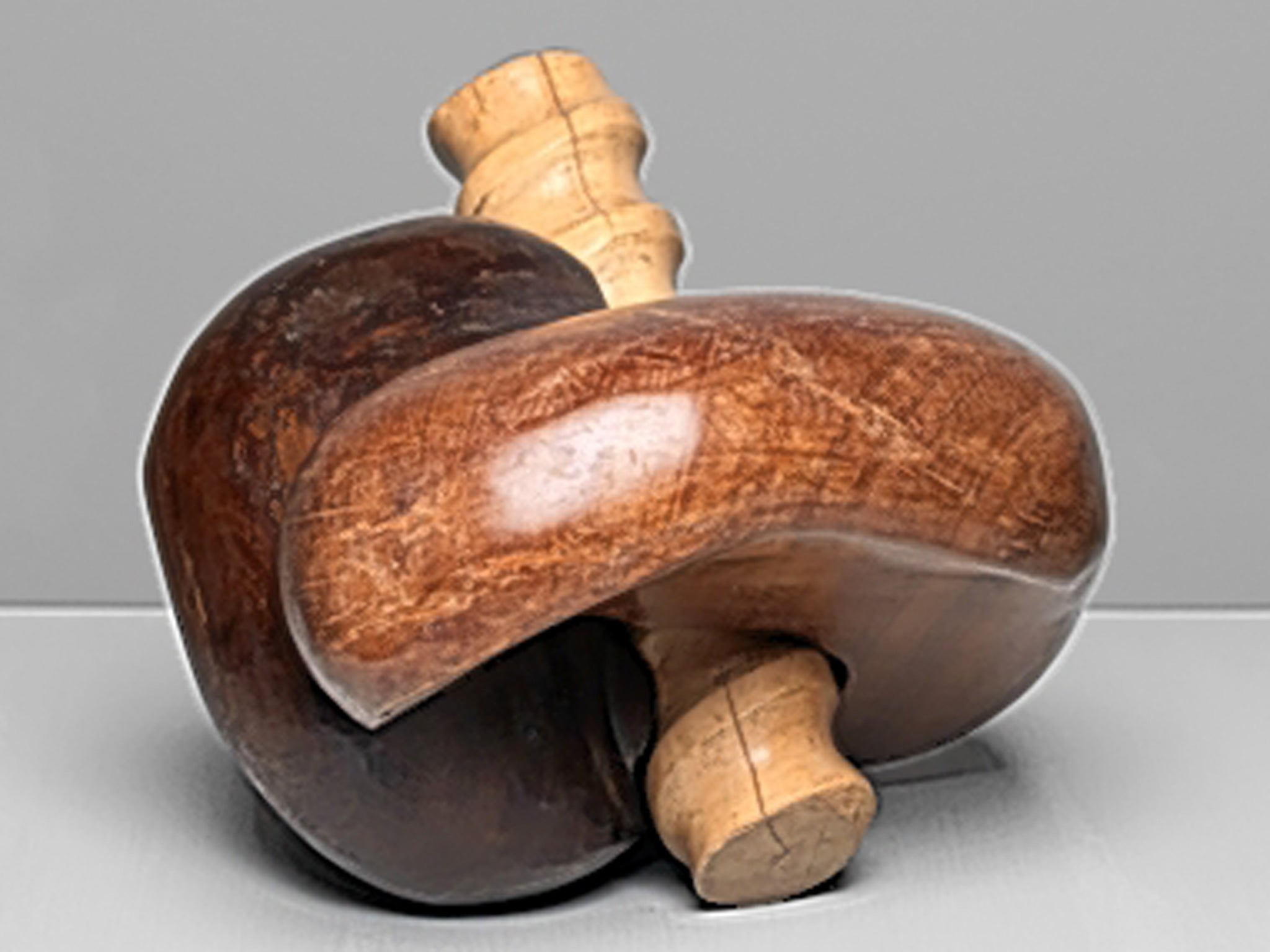Saloua Raouda Choucair: Age cannot wither the Tate's new sensation
At 97, the artist Saloua Raouda Choucair has a major show at last

Your support helps us to tell the story
From reproductive rights to climate change to Big Tech, The Independent is on the ground when the story is developing. Whether it's investigating the financials of Elon Musk's pro-Trump PAC or producing our latest documentary, 'The A Word', which shines a light on the American women fighting for reproductive rights, we know how important it is to parse out the facts from the messaging.
At such a critical moment in US history, we need reporters on the ground. Your donation allows us to keep sending journalists to speak to both sides of the story.
The Independent is trusted by Americans across the entire political spectrum. And unlike many other quality news outlets, we choose not to lock Americans out of our reporting and analysis with paywalls. We believe quality journalism should be available to everyone, paid for by those who can afford it.
Your support makes all the difference.In 1940s Paris, Saloua Raouda Choucair cut a distinctive figure. A rarity as an Arab woman working independently in France, she was producing an unfamiliar kind of abstract art influenced by Islamic design that left some perplexed. Greater miscomprehension was to follow when she returned home to Lebanon in the 1950s. While in Paris, she came to win the respect of critics as an avant-garde artist who dared to call into question the Western concept of modernity. She got a far colder reception from the Lebanese art establishment.
Once back in Beirut, having married, she worked in isolation, an outsider to the movements around her that regarded her work with suspicious eyes, partly because she was a woman in a male-dominated scene but also because they didn't understand the art she was producing.
A decade later, she had not sold a single piece of work in Lebanon (her first sale was in 1962) yet she carried on. Now, Tate Modern is staging the world's first major exhibition of her paintings and sculptures, many of which have never been seen.
The varied, and prolific, work of Choucair, now 97, ranges from ambitious architectural projects to plans for large-scale sculptures which were never fully realised in Lebanon, though she continued to make small models for what she hoped would one day become monumental public sculptures.
When she exhibited in 1940s Paris, the Lebanese arts community showed national pride in having a fellow artist cause such a stir abroad but reviews in the Arab media were nevertheless unfavourable. Kirsten Scheid, an art historian writing in Tate Modern's catalogue, notes that at one Paris show in 1952, the Lebanese ambassador had remarked to Choucair: "Your type of work is curious… Have you not done any Lebanese works for us?"
She was so misunderstood in subsequent decades that she apparently kept a bag next to her bed that was filled with objectionable press reviews on which she scribbled corrections such as "wrong" and "misinterpretations".
Her earlier paintings take gentle, and witty, swipes at French artists such as the 1948 series, Les Peintres Célèbres, featuring voluptuous females reminiscent of Gauguin's native Tahitians, whom Choucair shows reading art books and making cups of tea. Jessica Morgan, curator of the Tate Modern exhibition, says, "These were women who read about art and met your gaze. At the time, this might have been described as a feminist spoof."
She took a trip to Egypt to study its architecture and design and it was at this point that she began to consider the abstract in Islamic art. When she arrived in Paris, and started working in Fernand Léger's Parisian atelier, she brought the notion with her. Her Poem series reflects a contemporary experimental outlook. The series comprises a sculpture made from multiple smaller parts that can be taken apart and re-arranged by the viewer. "It is not a monolithic sculpture," says Morgan. "It can be re-interpreted by the viewer who is given an active role." The series was partly inspired by Sufi poetry in which every stanza can stand alone, as well as a whole.
Morgan says that while Choucair was incredibly prolific over her long career, her work was not sold. "No one was interested in acquiring it. She knew she was good. She has spent a whole life saying, 'When are they coming?'" The purpose of this show is not to right that wrong, she concludes, but to place her in her "rightful position as a significant figure in the history of 20th century art".
Saloua Raouda Choucair, Tate Modern, London SE1 (020 7887 8888) tomorrow to 20 October
Join our commenting forum
Join thought-provoking conversations, follow other Independent readers and see their replies
Comments